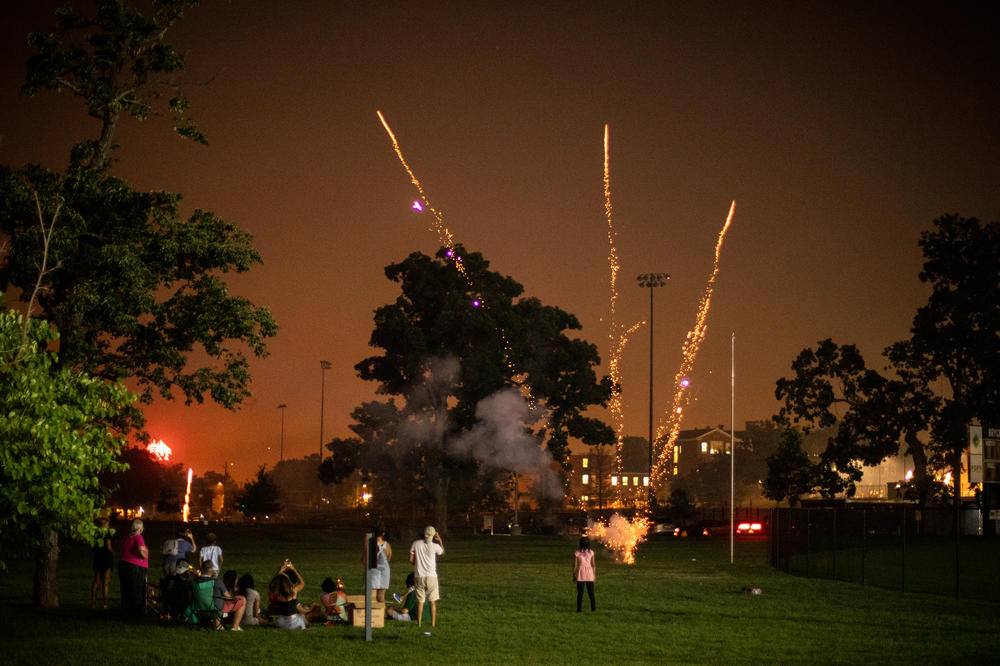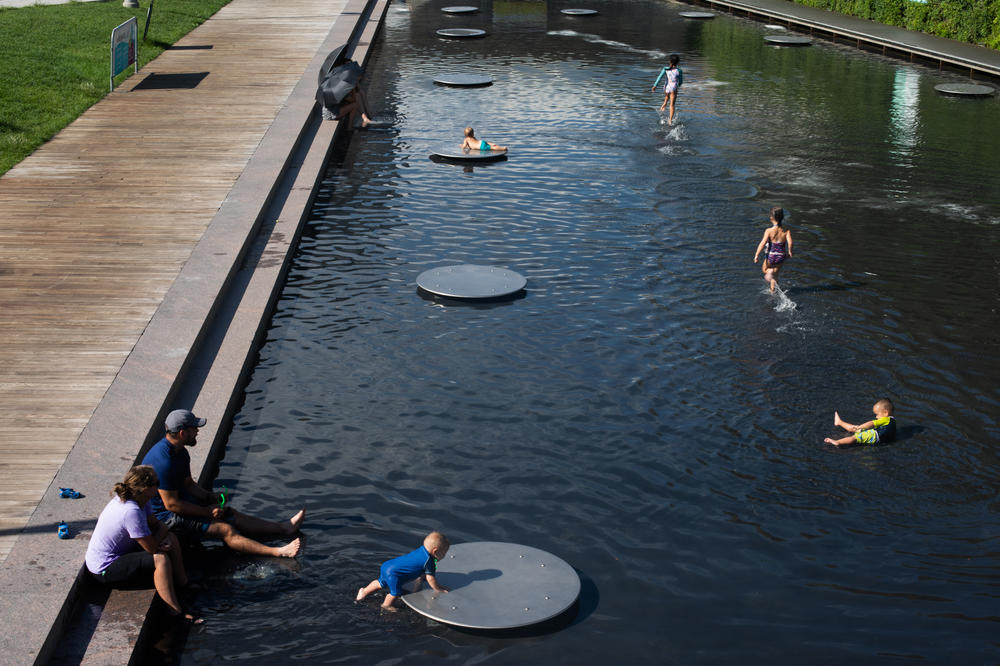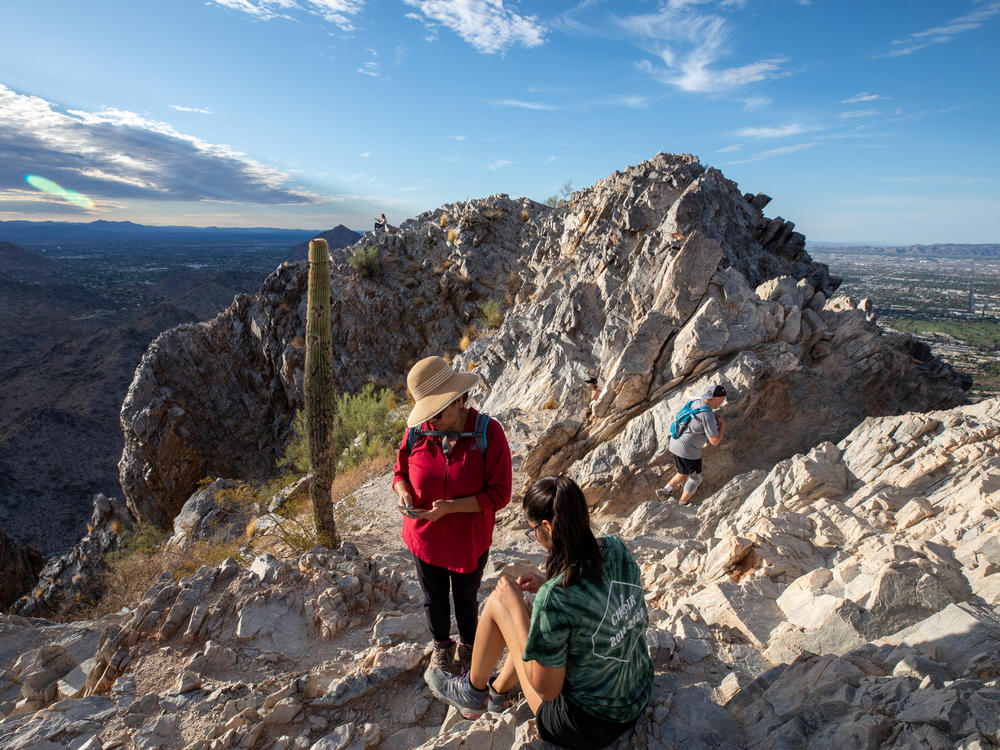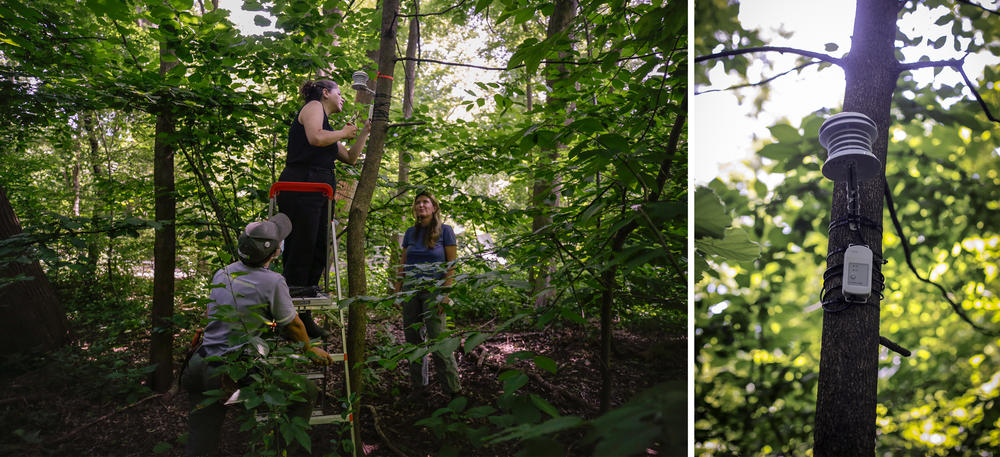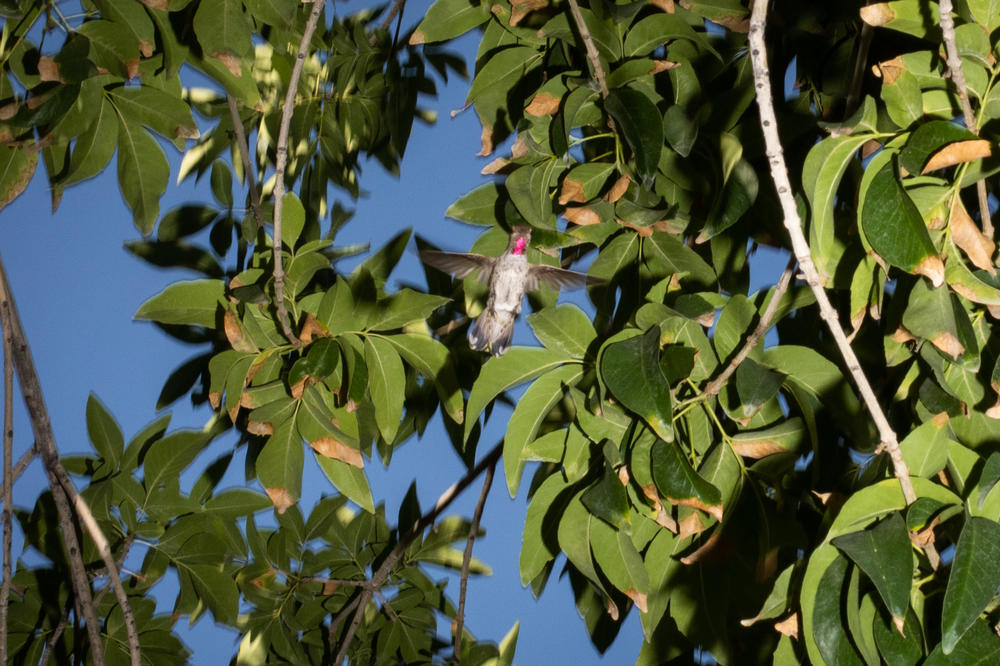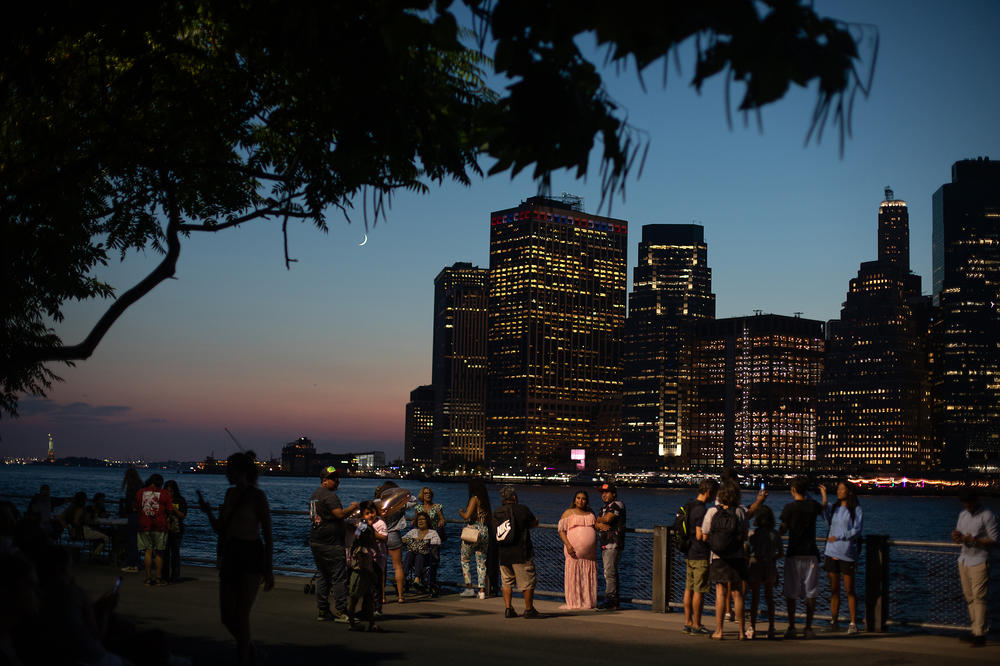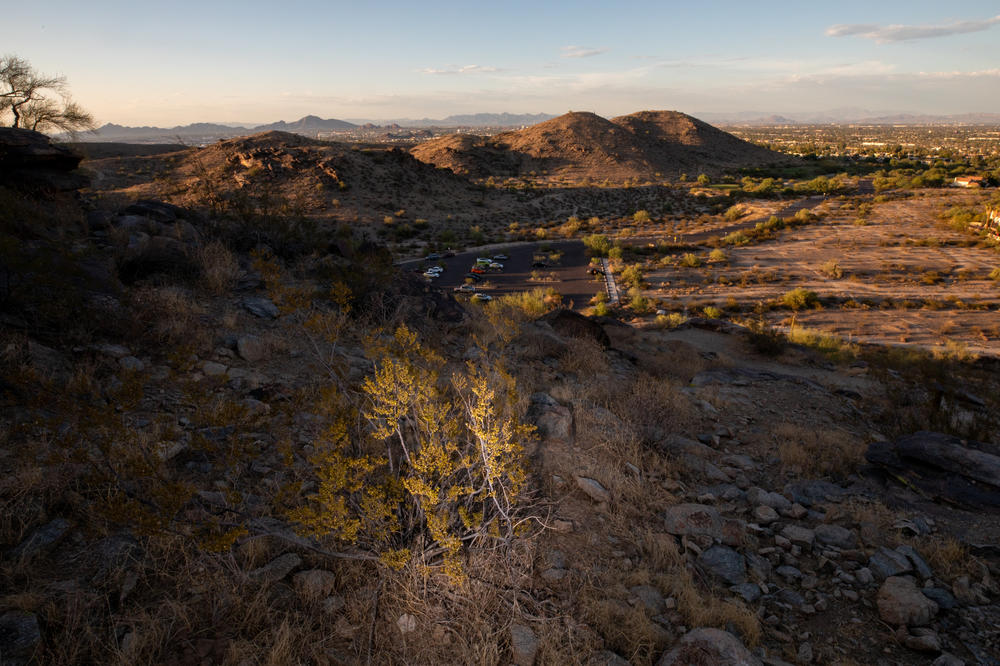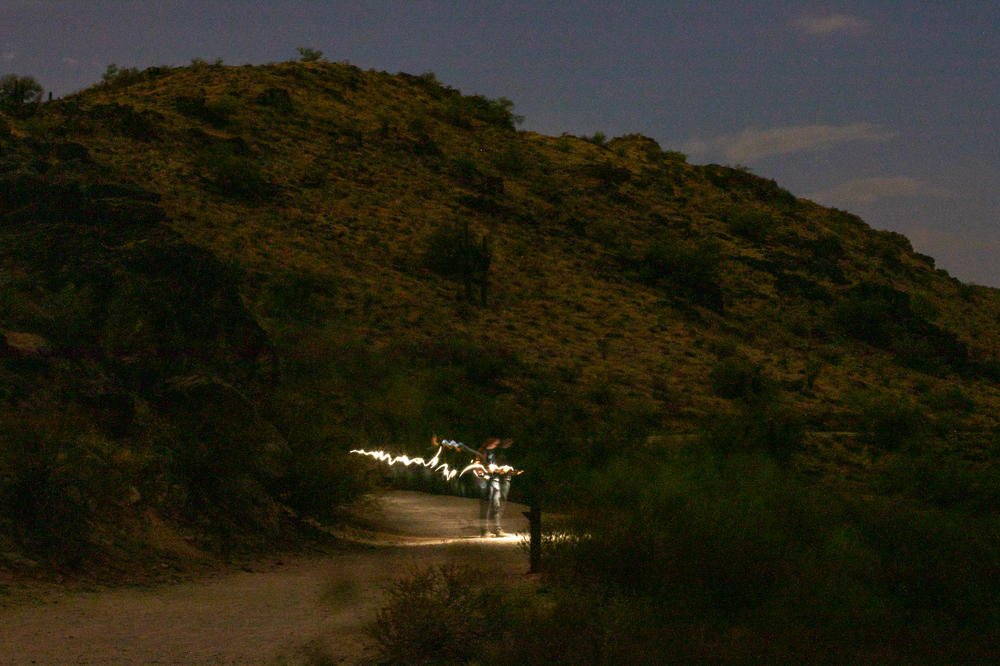Section Branding
Header Content
Your local park has a hidden talent: helping fight climate change
Primary Content
Consider the unremarkable city park. A postage stamp of green amid the concrete. Trees, swings, grass, a basketball hoop.
Maybe your park has a public pool. Maybe it has a walking path or a barbecue grill or a leafy spot that's good for watching birds. Yosemite it is not. Your park is not a vacation destination. Instead, it's something much more valuable: a little piece of nature, right where you live.
City parks are crucial precisely because they are mundane. Their accessibility is what gives them their power. There are about 2 million acres of public parkland in the 100 largest cities in the United States, according to the Trust for Public Land.
All that parkland helps protect millions of Americans from the effects of global warming. Pools and splash pads offer a place to cool off on dangerously hot days. Trees provide shade, pull carbon dioxide out of the air and even lower the temperature in nearby neighborhoods. Marshes, ponds and meadows soak up water when it rains to help keep roads and homes dry.
But climate change is threatening the very spaces that help us cope with it. As the Earth heats up, the effects of global warming are on display in urban parks across the country.
Global warming means more-severe floods and hurricanes, which damage park buildings, courts, playgrounds, walking paths and other infrastructure. Heat waves put stress on animals and plants and threaten native species. In the most extreme cases, the effects of global climate change temporarily make some parks in the U.S. downright dangerous for humans.
"[Parks] are part of the solution, but they themselves are vulnerable to some of the same threats," says Michelle Mueller Gamez, the manager of climate change research at the Central Park Conservancy in New York City.
But, like all urban environments, parks can adapt to a changing climate, at least to an extent. Scientists and local governments are working together to study how climate change is unfolding in urban green spaces and to figure out how to make parks more resilient.
Parks departments are on the front lines
Managing a city's worth of parks is a lot of work. There are ballfields to mow, trails to maintain, playground equipment to repair and swimming pools to staff. And there is rarely enough money to go around. Funding for parks has been stagnant or falling in most cities in the last decade.
At the same time, climate change demands ever more attention from parks departments, and dozens of cities have added new positions to meet those demands.
That includes resilience officers and risk managers, who are explicitly focused on global warming, as well as a small army of arborists, botanists, hydrologists, restoration ecologists and conservation biologists who think more broadly about how humans interact with nature.
The challenges they face are not always obvious. Take wildfires, for example. Climate change is exacerbating drought across the country, not just in the Western U.S. where the megadrought makes daily headlines. A hotter planet also means more wildfire risk in places like the Southeastern U.S., New England and the Midwest.
One of the best ways to reduce wildfire risk is to do controlled burns, where fire experts burn a section of grass or trees on purpose to keep the ecosystem healthy and reduce the amount of fuel available for a future, unplanned fire.
Cities in the Western U.S. have been doing controlled burns in city parks for decades. Now, parks departments in Austin, Detroit, Charlotte, Des Moines, Jacksonville, Houston and New York City are doing the same: setting fire to portions of parks on purpose to stave off more destructive blazes.
Matt McCaw manages such fires for the city of Austin. He says setting up a successful controlled burn requires a lot of expertise: You need to choose where and when to set it, and you need to understand exactly how it will behave so it doesn't get out of control. He brings two decades of fire experience to his job managing land for the Austin Parks and Recreation department.
In many cases, climate change requires cities to rethink what parks look like. After major floods damaged city parks in Des Moines, Iowa; Atlanta, Ga.; and Houston, Texas, local leaders in all three places redesigned parks so they would be able to withstand future floods.
Things that could be damaged by water, such as playgrounds and restrooms, are located on higher ground, and bike paths and grassy areas are relegated to the places most likely to be underwater after a storm. The parks are also designed to absorb and control water, in order to reduce flooding in nearby neighborhoods. Resilience and protection, all rolled into one park renovation.
"It's harder than it sounds. It's a science."
It takes a lot of work to keep plants and animals healthy in city parks, especially as the weather gets hotter. Heat waves put stress on trees that already have to live with soot in the air, polluted water and lesser indignities like humans carving initials into their trunks.
But keeping trees healthy is a huge part of protecting parks and people from climate change. Stands of diverse and native trees absorb and trap more carbon dioxide than other types of greenery. The carbon stored in the forests of New York City is equal to the carbon released by more than 400,000 cars driving for a year, according to a 2020 study.
Studies like that one are few and far between, however. We really do not know much about exactly how parks are reacting to, and helping to address, climate change. Enter the Central Park Climate Lab, which was launched this spring. The idea is for scientists, park employees and conservation groups to pool their money and labor and gather data about how climate change is affecting Central Park in Manhattan.
They're starting relatively small, by installing temperature sensors and mapping tree cover in the park. "We're learning a lot about challenges in measuring air temperature. It's harder than it sounds. It's a science," says Gamez, who helps lead research in the park.
But it's crucial information. In general, large green parks cool off the neighborhoods around them, but how much? And what happens if you replace native trees with other trees, or bushes, or a grassy soccer field? The answers could help cities make important climate-related decisions.
"We know houses adjacent to parks might need less air conditioning if they have green space that's keeping it cooler," explains Gamez. "As we're trying to reduce our carbon emissions, that's great."
The goal is to use Central Park, the grandfather of American city parks, as a testing ground that eventually helps inform park management across the country.
Protecting parks and people facing a hotter future
In some places, climate change is already making some city parks dangerous for humans.
Phoenix is known for its extensive and mountainous city parks.
But in the summer, many of those parks are not safe. It's simply too hot, and even seasoned hikers have collapsed from heat exhaustion. Minor injuries, like a sprained ankle or twisted knee, often become life-threatening emergencies when people are stranded in the sun.
Rescuing people from city parks does not fall to parks employees, but to the fire department. Special mountain rescue squads are made up of firefighters who train all year round so they can carry stretchers and first aid equipment up steep and rocky trails, and carry injured people down.
But it's become clear that no amount of training is sufficient on the hottest days. Last year, two city firefighters from an elite mountain rescue squad ended up in the hospital after doing back-to-back rescues from city park trails on a day when temperatures lingered near 115 degrees.
After that, the fire department asked the parks department for help. Some of the hiking trails should close on the hottest days, they argued. It was just too dangerous for residents and firefighters alike.
It was a sobering moment for firefighters, who like to think they're prepared for anything. "This is what I was made to do," says Tommy Reeve, a member of one of the mountain rescue squads. "I was made for being on the mountains and running in the heat."
But the weather is changing. "Sometimes when we're on the mountain when it's hot, it does worry me a little bit because I know we're in danger as well, of being overheated," he says.
Ultimately, the city decided to limit access to some of the most popular and exposed city park trails on the hottest days.
At the same time, the parks department is trying to encourage Phoenix residents to get outside safely. City park rangers are posted near popular trailheads in the summer, asking people if they have water and cellphones. And some city parks stay open late into the evening to encourage people to hike when temperatures are in the 90s instead of 110 degrees or more.
On a warm summer night, people flock to South Mountain Park, a sprawling and wild line of hills and valleys near the Phoenix airport. The parking lot is open until 9 p.m. in the summer — a particularly important adaptation in a city of cars — but many people also show up on foot, wandering up from cul-de-sacs that abut the park's trails.
It's peaceful, but not quiet. Planes and cars rumble in the distance. Crickets hum. A coyote calls out.
Matthias Kawski sits at the top of a hill, drinking a beer and looking at the stars and the bobbing headlights of mountain bikers deep in the park. Kawski loves the outdoors. He's drawn to epic landscapes. He says he has hiked large portions of the Grand Canyon.
But this little hill, behind his house, is the place he comes to most often. He's here every night. And it feels grand, in its own way. "I own this place," he says, gesturing broadly at the park laid out below him. "That's all for me." His little piece of nature, in the city.
Copyright 2022 NPR. To see more, visit https://www.npr.org.
